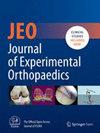The combination of a medial pivot design with kinematic alignment principles in total knee arthroplasty can ensure a closer to normal knee kinematics than combining mechanical alignment and more traditional implant designs: An umbrella review
Abstract
Purpose
The recent introduction of personalized alignment strategies in total knee arthroplasty (TKA) has transformed adult reconstruction. Proponents advocate for these techniques due to their kinematic benefits compared to traditional methods. Current literature supports combining medial-pivot designs with kinematic alignment (KA) surgery. This review summarizes the application of gait analysis in KA medial-pivot TKA and recommends gait parameters related to patient satisfaction.
Methods
This review followed the Preferred Reporting Items for Systematic Reviews and Meta-Analyses extension for Scoping Reviews (PRISMA-ScR). One hundred twenty-one articles from the three search engines underwent a preliminary title/abstract and full-text screening. The final screening resulted in 23 systematic reviews (SR), meta-analyses (M-A) and narrative reviews (NR) as core articles of the current umbrella review.
Results
Out of the original 121 SR/M-A/NR articles, 23 (19%) were ultimately evaluated based on the reported results. Twelve articles fell into the first category (gait analysis following TKA as the main topic), five articles were designated for the second category (knee implant design), only one article was classified in the third category (kinematic alignment) and five articles were assigned to the fourth category (a combination of all main topics).
Conclusions
The literature investigating the relationship between kinematic and spatiotemporal data and clinical outcomes following KA medial pivot TKA is limited. Few studies included in the current review showed that remote measurements using wearable sensors are more informative than patients' reported outcome measurements (PROMs) regarding a patient's daily level of activities and, ultimately, gait. The current review demonstrated that combining KA and MP designs can ensure a knee kinematic closer to normal than combining MA and more traditional implant designs.
Level of Evidence
Level I.




 求助内容:
求助内容: 应助结果提醒方式:
应助结果提醒方式:


